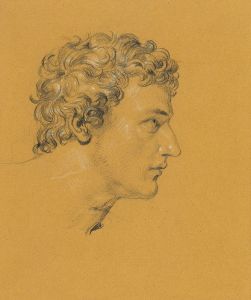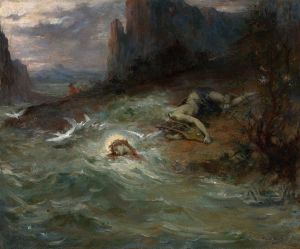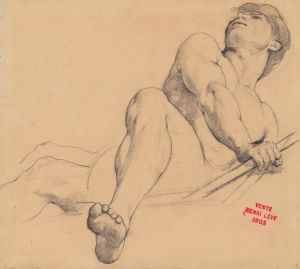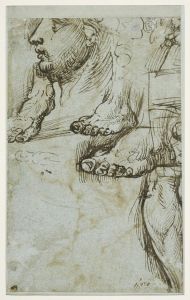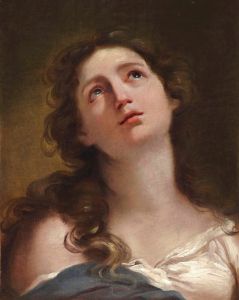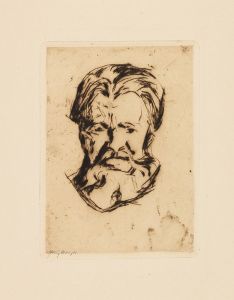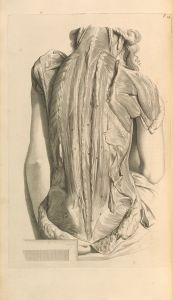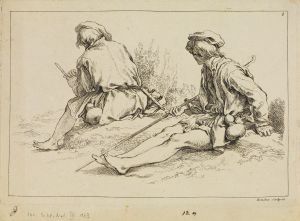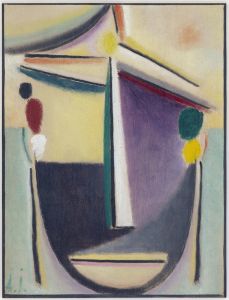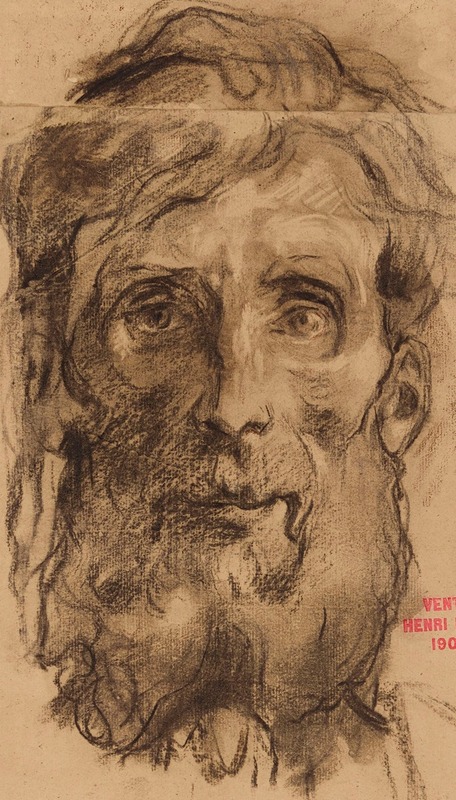
Etude de visage d’homme
A hand-painted replica of Henri Leopold Lévy’s masterpiece Etude de visage d’homme, meticulously crafted by professional artists to capture the true essence of the original. Each piece is created with museum-quality canvas and rare mineral pigments, carefully painted by experienced artists with delicate brushstrokes and rich, layered colors to perfectly recreate the texture of the original artwork. Unlike machine-printed reproductions, this hand-painted version brings the painting to life, infused with the artist’s emotions and skill in every stroke. Whether for personal collection or home decoration, it instantly elevates the artistic atmosphere of any space.
Henri Léopold Lévy was a French painter born on September 23, 1840, in Nancy, France, and he passed away on December 29, 1904, in Paris. Lévy was known for his works that often depicted historical and religious themes. He was a student of the renowned French painter François-Édouard Picot and later studied under Alexandre Cabanel at the École des Beaux-Arts in Paris. Lévy's style was influenced by the academic traditions of the time, and he became known for his skillful use of color and composition.
"Etude de visage d’homme" (Study of a Man's Face) is one of Lévy's works that exemplifies his interest in capturing the human form and expression. While specific details about this particular painting are scarce, it is consistent with Lévy's broader oeuvre, which often focused on detailed studies of figures and faces. Such studies were common practice for artists of the 19th century, who sought to perfect their understanding of anatomy and expression through careful observation and rendering.
Lévy's work was well-regarded during his lifetime, and he exhibited regularly at the Paris Salon, the official art exhibition of the Académie des Beaux-Arts in Paris. His paintings were characterized by their meticulous attention to detail and their ability to convey emotion and narrative through the depiction of the human figure. Lévy's contributions to art were recognized with several honors, including being named a Chevalier of the Legion of Honor in 1872.
The study of a man's face, as seen in "Etude de visage d’homme," would have been an exercise in capturing the subtleties of human expression and the unique characteristics of the subject. Such studies were essential for artists who aimed to create more complex compositions involving multiple figures or narrative scenes. By focusing on the face, Lévy could explore the nuances of light, shadow, and texture, which are crucial elements in bringing a portrait to life.
Lévy's work is part of the broader tradition of academic art in the 19th century, which emphasized technical skill and adherence to classical standards of beauty and composition. While the specifics of "Etude de visage d’homme" are not widely documented, the painting likely reflects Lévy's commitment to these principles and his interest in exploring the human condition through art.
Today, Henri Léopold Lévy's works are appreciated for their technical proficiency and their contribution to the academic art movement of the 19th century. His studies, such as "Etude de visage d’homme," continue to be of interest to art historians and enthusiasts who seek to understand the techniques and approaches of artists from this period. Although not as widely known as some of his contemporaries, Lévy's paintings remain a testament to the skill and dedication of artists working within the academic tradition.





